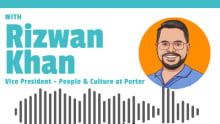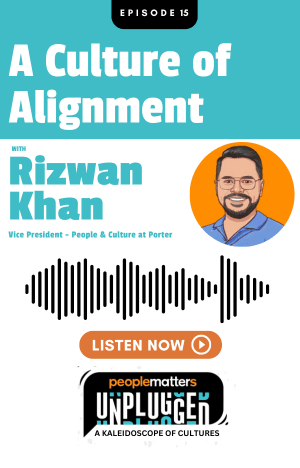Gig economy has far-reaching implications for businesses: Randstad's Jaya Dass

Jaya Dass joined Randstad in 2008 as a recruitment consultant and she now helms the Singapore and Malaysia offices that collectively house more than 130 recruitment consultants across multiple specializations. Equipped with strong business acumen drawn from her prior experience in business operations and development as well as audit, Jaya is known for her ability to craft future-ready business strategies and empathetic leadership skills.
How do you see the rise of the gig economy which is being debated these days more than ever?
The growth of the gig economy coincides with the rise of social media as well as the competition to innovate. While social media has made it possible for people to connect and build relationships, it also fostered a new expectation - instant gratification. This gave rise to the on-demand marketplace that we see now, dominated mainly by unicorn start-ups such as Grab (and Uber), Deliveroo (and Postmates), Spotify, Netflix and Airbnb.
These innovators are giving traditional firms a run for their money. On-demand services are disrupting the market and changing the way consumers interact and engage with a brand. Companies in manufacturing, financial services, healthcare and even supply chain are investing billions of dollars into tech developments to defend their market share and meet customers’ growing expectations on brands to deliver the “next big thing”.
The key motivating factor for many gig workers in asia pacific is the extra income they could get from working several gigs at the same time, particularly in low-income gig jobs
This new industry has also created new types of jobs for people to earn good income. Gig workers include anyone from an Uber driver or Airbnb host, to project managers and application developers who are instrumental in digital transformation projects that global companies are investing in.
By hiring gig workers and contractors (fixed-term or project-based employees), companies can be more agile in the way they respond to customer needs. They are able to bring experts with niche skills on board during the transition period, without having to bear high overheads of a permanent staff. A blended workforce, if managed well, can give the company the launchpad it needs to stay ahead of its competitors.
However, the discrepancies between the salary and benefits coverage between a permanent employee and a gig worker are becoming more obvious. Unsatisfactory employer practices such as poor insurance coverage, lack of annual leave days and late salary payments have forced some gig workers to take it up to their unions and public agencies to voice their demands.
How do you see the future of work in the context of the rising gig economy?
The impact of the gig economy on the labor market varies, depending on who you talk to. While it's easy to write "gig economy" off as a buzz phrase used by techies and founders of innovative start-ups, it is an important concept that has far-reaching implications for employees and companies to come.
There's no question that, in the last several years, the gig economy trend has certainly grown. According to the Ministry of Manpower in Singapore, the number of residents engaged in their own account work has grown from 200,100 in 2016 to 223,500 in 2017.
Some of the key industries where gig economy workers are currently employed include banking and financial services, construction and property, trade manufacturing and supply chain as well as healthcare. Specialized professionals in accounting and finance, sales and marketing as well as human resources are also more open to the idea of working on a contract term, as they can choose to work on projects that they are passionate about and get paid a premium for their expertise.
While there are some definite drawbacks of the gig economy, one thing seems certain. It's going to continue to grow and may soon become the new workforce dynamic. Companies and freelancers (self-employed) are now shifting their focus to how the gig economy is being regulated and working together to ensure that employment rights, regardless of their status, are equal and well protected.
How can businesses leverage the millennial alternative workforce moving forward?
It is critical for companies to understand what millennials are looking for in an employer and a job. I believe that young people want to work in a job that they love, with an employer whom they believe in.
Many people think that millennials are lazy and self-entitled. However, the truth is far from that. Besides having a full-time job, it is common for millennials and Generation-Z workers to have a side hustle that is more aligned with their personal interests. We have seen many millennials choosing to work as yoga instructors or graphic designers during their own time.
Employers that want to actively engage younger workers should not be punishing this behavior. Instead, they should encourage millennials to take advantage of their youth and expose themselves to new technologies and ideas. When they gain new perspectives outside of the office, they will come back with great new ideas that could improve business performance. As long as their side hustles do not interfere with the quality of their work or have a conflict with the business, millennials should be encouraged to learn and engage with other communities outside of their working hours.
In the 2019’s annual Employer Brand Research conducted in Singapore, 42 percent of millennials and Generation Z workers said that they look for employers that offer career growth opportunities. The younger generations have a hunger for knowledge, and companies that want to engage them to build a sustainable talent pipeline need to be able to meet those expectations. Instead of in-house and on-the-job training, employers can also consider signing the youths up for conferences and networking sessions, mentorship programs and global exchange curriculums.
What are major motivating factors behind the swelling gig force? Do you see any different patterns in SEA or APAC market?
The key motivating factor for many gig workers in Asia Pacific is the extra income they could get from working several gigs at the same time, particularly in low-income gig jobs. Unfortunately, by doing so, they may actually feel like they are working in a full-time job. If not managed well, some gig workers may risk committing longer working hours than a permanent employee. This is slightly different when it comes to professional gig workers who provide consultancy services to large firms, either on a project-basis or an hourly-rate. This group of workers can choose which companies they want to work with to build their own portfolio, as well as manage their own time so that they can have a healthy work-life balance.
Many Asian countries are still in developing stages and on-demand services are gaining popularity among local consumers. Therefore, we are seeing more people in the low-income gig scene, such as food delivery drivers. The widening skills gap also means that there is a very limited pool of talent in the professional gig scene for companies to engage.
Within Asia Pacific, cities like Singapore, Hong Kong SAR and Shanghai would have more professional gig workers. This can be attributed to a robust education system and opportunities in the workplace for them to grow professionally.
How are talent management practices changing in the gig economy and how are organizations adapting to these changes?
The gig economy should not be seen as a long-term strategy to attract good talent. Gig workers are normally engaged on a project or hourly basis to fill skills gap in the company and they typically do not stick around once they have delivered their job. By the end of the day, if the worker’s perception of the company is poor, they will choose not to work with the company anymore and will advise their peers against doing so as well.
Employer branding is the long-term strategy to unlock good talent. Companies that invest in strengthening their employer brand will be able to attract more talent that they need to ensure business sustainability. When a worker feels that their expectations have been met by the employer, they will share their positive experiences with their peers. Through word-of-mouth, the candidate pool will grow in size and these companies will have more talent to engage with.
When a company has a good employer branding, they will be able to attract and engage highly-skilled talent on either a permanent or temporary basis. The 2019 global Randstad Employer Branding also noted that 80 percent of the Australian respondents said that a positive employee experience help increase trust in the organization and made it more likely that they would recommend their place of work to family or friends.
How can businesses gear up to cash in on the big opportunity that gig economy offers?
Regardless of whether the worker is a permanent employee, contract staff or gig worker, they should be receiving fair benefits. However, it would not be realistic for a company to provide the same benefits to everyone, as each of them are contributing to the company in different ways.
As a start, every employee and gig worker should receive the same basic benefits, such as insurance or medical claims, a cap on the number of working hours each day, paid leave and fair remuneration (in exchange for their contributions). Permanent employees, who have less control over their own time management, will have more access to additional employee benefits, such as parental leave and flexible work options. It is critical for employers to effectively communicate to their workers the benefits that they are entitled to and why there are differences in the type of benefits they are receiving. Companies can also consider conducting regular engagement surveys with gig workers to understand their sentiments, motivations and expectations of the organization. The feedback would give employers the opportunity to proactively tweak the benefits package for gig workers to meet their expectations.
Within asia pacific, cities like Singapore, Hong Kong SAR and Shanghai would have more professional gig workers. This can be attributed to a robust education system and opportunities in the workplace for them to grow professionally
Do you think the inroads made by technology such as AI and ML will have a significant influence on pushing some jobs out of the traditional and into the gig domain?
New technologies have definitely made a handful of administrative-heavy tasks redundant. For example, some companies have replaced customer service teams with bots that can immediately answer the enquiry from an online user, which has proved to be a huge time-saver for the retail and F&B industry.
However, instead of being fearful of how technology will radically take over jobs, we should feel empowered by it. New technologies help us be more productive at work. Because of a 5G network, we are able to connect with people across the world on video to align on next steps at work in a matter of minutes. Technology will disrupt the way we work and we will see our job scopes and responsibilities drastically evolve. The onus is up to us to keep up with the changes.
It would be critical that employees be willing to put in time and resources to constantly upskill themselves and stay relevant in the labor market. The gig economy is an ideal platform for people to upskill themselves. If a person wants to break out of their comfort zone to acquire new skills and build a new professional network, they could consider joining the new industry as a gig worker. It would also give them the opportunity to trial the new work environment, so that they can better decide for themselves if those new skills and work environment meet their personal career aspirations.
Regardless of whether the worker is a permanent employee, contract staff or gig worker, they should be receiving fair benefits. However, it would not be realistic for a company to provide the same benefits to everyone, as each of them are contributing to the company in different ways
What are the major challenges facing the big gig force? And what are the major hurdles facing organizations in terms of talent management and culture?
The biggest challenge that companies in Asia Pacific is facing from the rise of the gig economy is employee integration and engagement.
When the gig economy first started, employers were not sure of how to integrate the different groups of employees together. Permanent employees feel that the gig workers will “steal” their jobs and temporary workers do not want to form new professional relationships with colleagues whom they will have to bid farewell to in a few months.
However, we have observed that this situation is slowly improving.
We see more employers introduce engagement initiatives which ensure that each department and team has a good mix of permanent, contractors and gig workers working together. For example, within the accounting and finance function, there would be external consultants (professional gig workers) who will work with C-level executives to develop a strategy to improve financial performance. Permanent and contract workers are both responsible for executing and following through with the strategy. It is also common for transformation project teams to have a mix of employees on different types of employment contracts due to the need for different niche skills and expertise.
It would be critical that employees be willing to put in time and resources to constantly upskill themselves and stay relevant in the labor market. The gig economy is an ideal platform for people to upskill themselves
When people collaborate together on the same project, they have a common goal. They will be more open to sharing ideas and constructive comments on how to best reach the goal together. This human capital strategy will help create a collaborative work environment which encourages people to learn from each other and upskill the workforce.













